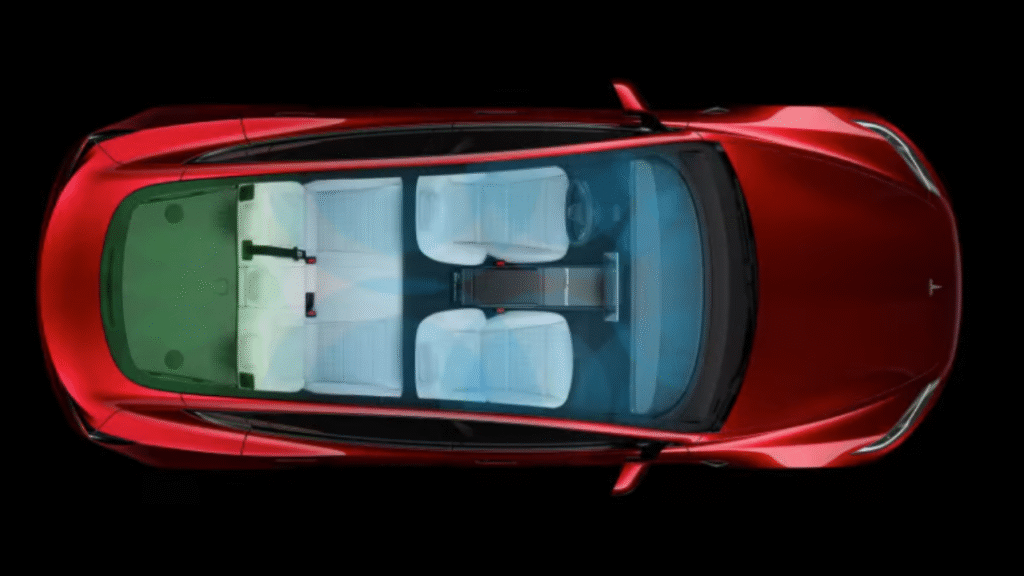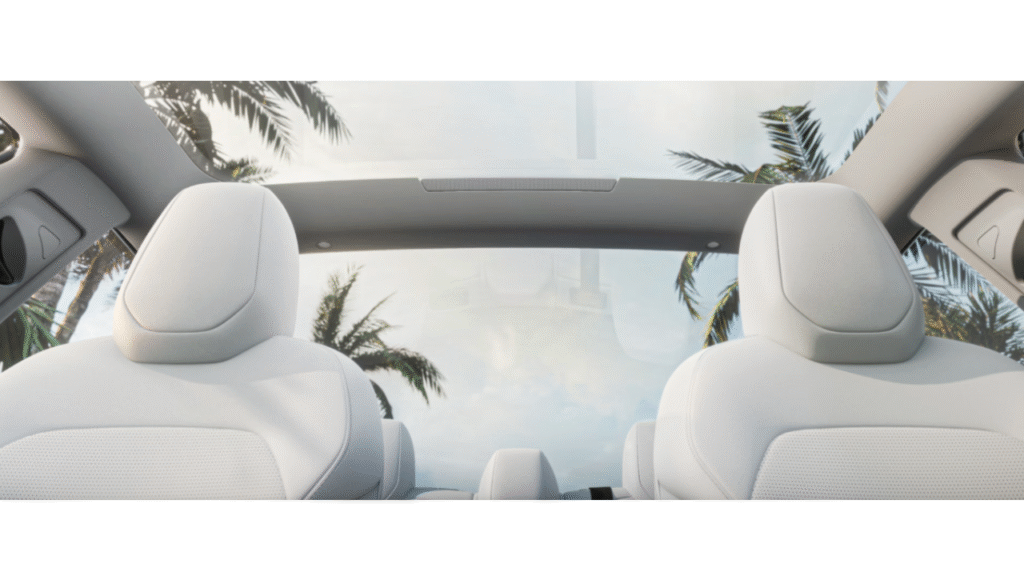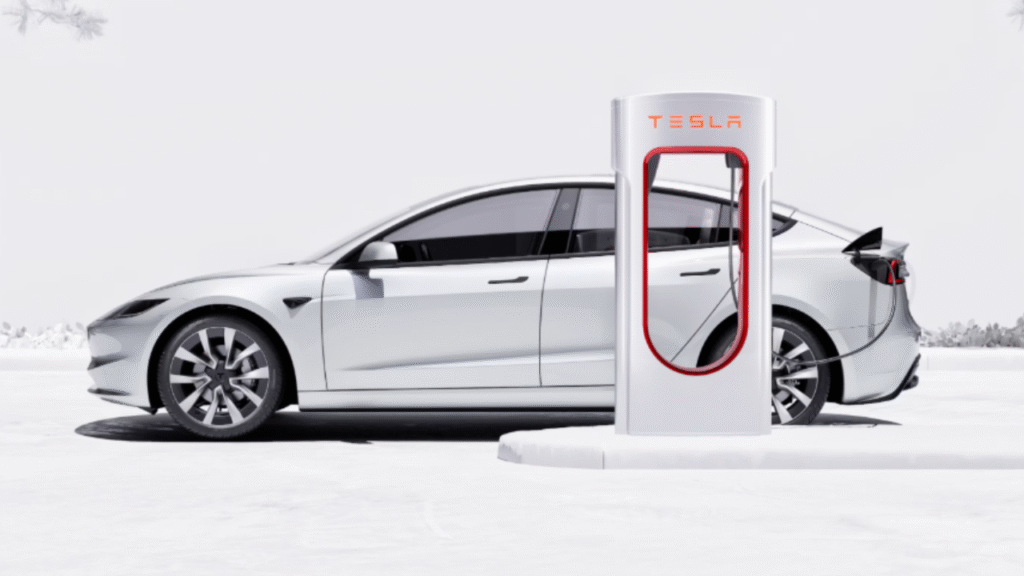Blimey, 2025 already. The electric car landscape feels almost unrecognisable from just a few years back. New contenders pop up seemingly every week, each promising more range, more tech, more pizzazz. Yet, amidst this ever-growing crowd, one nameplate remains stubbornly familiar, consistently near the top of the sales charts, and still the benchmark for many: the Tesla Model 3. But is this pioneer still the electric darling it once was, or has the competition finally caught up? Let’s take a proper look at living with the Tesla Model 3 in 2025.
Tesla Model 3 is more than just a familiar face: subtle refinements
The fundamental silhouette of the Tesla Model 3 remains instantly recognisable – that sleek, low-slung saloon profile is iconic. Tesla hasn’t felt the need for radical surgery, and frankly, why would they? It’s a handsome, aerodynamic design that still turns heads. But look closer in 2025, and you’ll spot the subtle tweaks. The build quality feels noticeably tighter; panel gaps are consistently even, a welcome evolution from earlier iterations. New wheel designs offer a fresher look, and the paint palette has seen some tasteful additions and subtractions, keeping things modern. Inside, the minimalist ethos prevails, but materials have taken a step up. The standard vegan leather feels more premium, touchpoints are softer, and the overall ambience feels less starkly utilitarian than the very early models. It’s still dominated by that central touchscreen, but the Tesla Model 3 cabin in 2025 feels more resolved, more mature.
Driving: The Core Appeal Still Shines
Slide behind the wheel of the 2025 Tesla Model 3, prod the right pedal, and that sensation remains utterly addictive. The instant, silent surge of acceleration, especially in the Long Range or Performance variants, is a party trick that simply never gets old. It transforms the daily commute into something genuinely thrilling. The handling, too, is a key strength. The low centre of gravity bestowed by the floor-mounted battery pack gives the Tesla Model 3 remarkably sharp and agile responses. It feels planted through corners, steering is direct (if still a little devoid of classic feedback), and the ride, while certainly firm, has been subtly refined over the years. It handles British B-roads with more composure than you might expect, soaking up smaller imperfections better than before, though larger potholes can still send a jolt through the cabin. For effortless, rapid progress, the Tesla Model 3 experience remains deeply impressive.
The Tech Heart: Evolving, Not Revolutionising
Tesla’s tech has always been a major draw, and the 2025 Tesla Model 3 continues to offer a compelling package. The central 15.4-inch touchscreen is responsive, bright, and logically laid out – once you’ve acclimatised to having everything controlled through it. The latest iteration of Tesla’s software (currently rolling out) brings minor visual tweaks, improved voice command recognition (“Navigate to Cardiff avoiding motorways” works a treat), and ongoing refinements to features like the excellent navigation system with real-time traffic and Supercharger routing. The digital instrument cluster remains absent on the base model, relying solely on the central screen – an acquired taste, but one most owners adapt to swiftly. Over-the-air (OTA) updates continue to be a game-changer, delivering new features, performance tweaks, and safety improvements overnight. Your Tesla Model 3 genuinely feels like it improves over time.

Range & Charging: Less Anxiety, More Assurance
Range anxiety? It’s becoming a relic, especially with the 2025 Tesla Model 3. The base Rear-Wheel Drive model, now predominantly using efficient LFP batteries, offers a very usable real-world range comfortably exceeding 270 miles on a charge. The Long Range variant pushes this well beyond 350 miles in favourable conditions. Crucially, Tesla’s range estimates displayed in the car are generally considered among the most accurate and trustworthy in the industry. Factor in the crown jewel – the extensive and incredibly reliable Tesla Supercharger network – and long journeys become remarkably stress-free. Finding a rapid charger is rarely an issue, and the plug-and-charge simplicity (you just plug in, billing is automatic) is still leagues ahead of many competitors who rely on fragmented third-party networks and fiddly apps. Charging your Tesla Model 3 on a long trip remains one of the most seamless EV experiences available in the UK.
Everyday Practicality: Saloon Smarts
As a compact executive saloon, the Tesla Model 3 offers sensible practicality. The boot is a decent size (especially with the underfloor storage) and opens via a conventional hatch, making loading bulky items easier than a traditional saloon boot. The front boot (frunk) provides additional, lockable storage perfect for charging cables or a weekend bag. Rear seat space is adequate for adults on most journeys, though taller passengers might find legroom merely acceptable rather than generous on very long trips. The cabin storage solutions are clever, with a large central console bin and door pockets. For a young family or as a commuter car, the Tesla Model 3 ticks the practicality boxes efficiently. It’s not an estate car, but it’s far more versatile than its sleek lines might suggest.
Value Proposition: More Competitive Than Ever?
Here’s where things get interesting in 2025. The Tesla Model 3 is no longer the undisputed value king it was a few years back. Significant price cuts implemented in 2023/2024, partly driven by increased competition and production efficiencies, have made it far more accessible. The base model now sits firmly in the thick of the competitive mainstream EV market. However, rivals from Hyundai, Kia, BMW, and increasingly, Chinese brands like BYD offer compelling alternatives, sometimes with more plush interiors or longer warranties. Where the Tesla Model 3 still claws back ground is in its total cost of ownership. Exceptional efficiency means lower running costs. The robust Supercharger network reduces long-journey hassle. Strong residual values help, and in the UK, favourable Benefit-in-Kind (BiK) rates for company car users (currently just 2%) make it an incredibly tax-efficient choice. So, while the initial price might face stiff competition, the whole-life cost of owning a Tesla Model 3 often remains very attractive.
The Human Element: What’s it Really Like to Live With?
Beyond the specs, what defines the 2025 Tesla Model 3 ownership experience? It’s a car that becomes effortlessly integrated into your life. Pre-conditioning the cabin via the app on a frosty morning is bliss. Sentry Mode offers genuine peace of mind when parked in dodgy car parks. The sheer ease of driving – the smooth power delivery, regenerative braking that often means one-pedal driving, the quietness – makes urban commutes and motorway slogs far less tiring. The Tesla community in the UK is active and helpful. Service is primarily mobile – Tesla rangers come to you for most things, which is incredibly convenient. Yes, build quality inconsistencies can still surface (though less frequently), and dealing with Tesla service centres for bigger issues can sometimes test patience, as their rapid growth has occasionally strained resources. But for most owners, the day-to-day convenience and driving pleasure of the Tesla Model 3 far outweigh these occasional niggles. It feels like driving the future, today.
The Competition Heats Up: Still the One to Beat?
Let’s be clear: the competition in 2025 is fierce. The Hyundai Ioniq 6 offers stunning looks and efficiency. The BMW i4 delivers a more traditional premium feel and driving dynamics. The BYD Seal is a direct, well-equipped challenger often undercutting on price. The Tesla Model 3 no longer exists in a vacuum. However, it retains significant advantages. The sheer depth and reliability of the Supercharger network is a massive differentiator for anyone travelling beyond their local area regularly. The efficiency is still class-leading, maximising range from every kilowatt-hour. The software experience, while occasionally polarising, is generally more polished, intuitive, and frequently updated than many rivals. The performance, especially in dual-motor variants, is exhilarating. The Tesla Model 3 might not be the only choice anymore, but it remains the benchmark against which many others are still measured.

Looking Ahead: What Next for the Model 3?
Rumours of a significant refresh, sometimes dubbed “Highland” or “Juniper,” have swirled for a while. We might see more substantial exterior tweaks, perhaps projector headlights replacing the current reflectors, further interior material upgrades, or even ventilated seats finally making an appearance. Hardware 4, with improved cameras and processing, is likely to filter down soon, enhancing Autopilot and Full Self-Driving (FSD) capabilities (though widespread UK FSD approval remains elusive). Battery tech will continue to incrementally improve. Yet, the core formula – a desirable, efficient, tech-laden electric saloon with access to the best charging network – seems set to endure. The Tesla Model 3 is evolving, not being replaced.
Tesla Model 3 (2025) USA: Price & Feature Overview
Core Specifications & Pricing (Representative – Q1 2025 Projection):
| Feature Category | Model 3 Rear-Wheel Drive (RWD) | Model 3 Long Range AWD (LR) | Model 3 Performance (Perf) |
|---|---|---|---|
| Starting Price (Est.) | $38,990 | $47,990 | $53,990 |
| Federal Tax Credit | $7,500 (Potential) | $7,500 (Potential) | $0 (Likely) |
| Effective Starting Price | ~$31,490 | ~$40,490 | $53,990 |
| Powertrain | Single Motor RWD | Dual Motor AWD | Dual Motor AWD |
| Battery Type | LFP (Lithium Iron Phosphate) | Nickel-Cobalt Based | Nickel-Cobalt Based |
| Acceleration (0-60 mph) | 5.8 seconds | 4.2 seconds | 3.1 seconds |
| Top Speed | 125 mph | 145 mph | 162 mph |
| EPA Range (Est.) | 272 miles | 341 miles | 296 miles |
| Max Charging Speed (DC) | 170 kW | 250 kW | 250 kW |
| Efficiency (Est.) | ~132 MPGe | ~126 MPGe | ~115 MPGe |
| Wheels (Standard) | 18″ Photon Aero | 18″ Photon Aero | 20″ Überturbine |
| Warranty (Vehicle) | 4 years / 50,000 miles | 4 years / 50,000 miles | 4 years / 50,000 miles |
| Warranty (Battery/Drive) | 8 years / 100,000 miles (LFP) | 8 years / 120,000 miles | 8 years / 120, |

The Verdict: Enduring Appeal in a Crowded Market
So, is the 2025 Tesla Model 3 still relevant? Absolutely. While it may have lost its absolute monopoly on the ‘best EV’ crown, it remains an outstanding all-rounder and a compelling choice for a vast number of British drivers. Its strengths – thrilling performance, superb efficiency, class-leading charging infrastructure access, OTA updates, and a generally seamless ownership experience – are as potent as ever. The refinements in build quality and materials have addressed key early criticisms. Yes, the competition is tougher, offering tempting alternatives, particularly if interior plushness or a traditional dealer experience are top priorities. But for those prioritising cutting-edge tech, effortless long-distance travel, low running costs, and that unique Tesla driving experience, the Tesla Model 3 continues to make an incredibly persuasive case. It’s matured gracefully, becoming a more polished and complete package, yet retaining the core electric spark that made it revolutionary. In 2025, the Tesla Model 3 isn’t just surviving the EV onslaught; it’s still thriving, proving that sometimes, the original recipe, carefully refined, is hard to beat. If you’re considering making the electric switch, it absolutely deserves a place on your test drive list. You might just find that spark is still very much alive.

